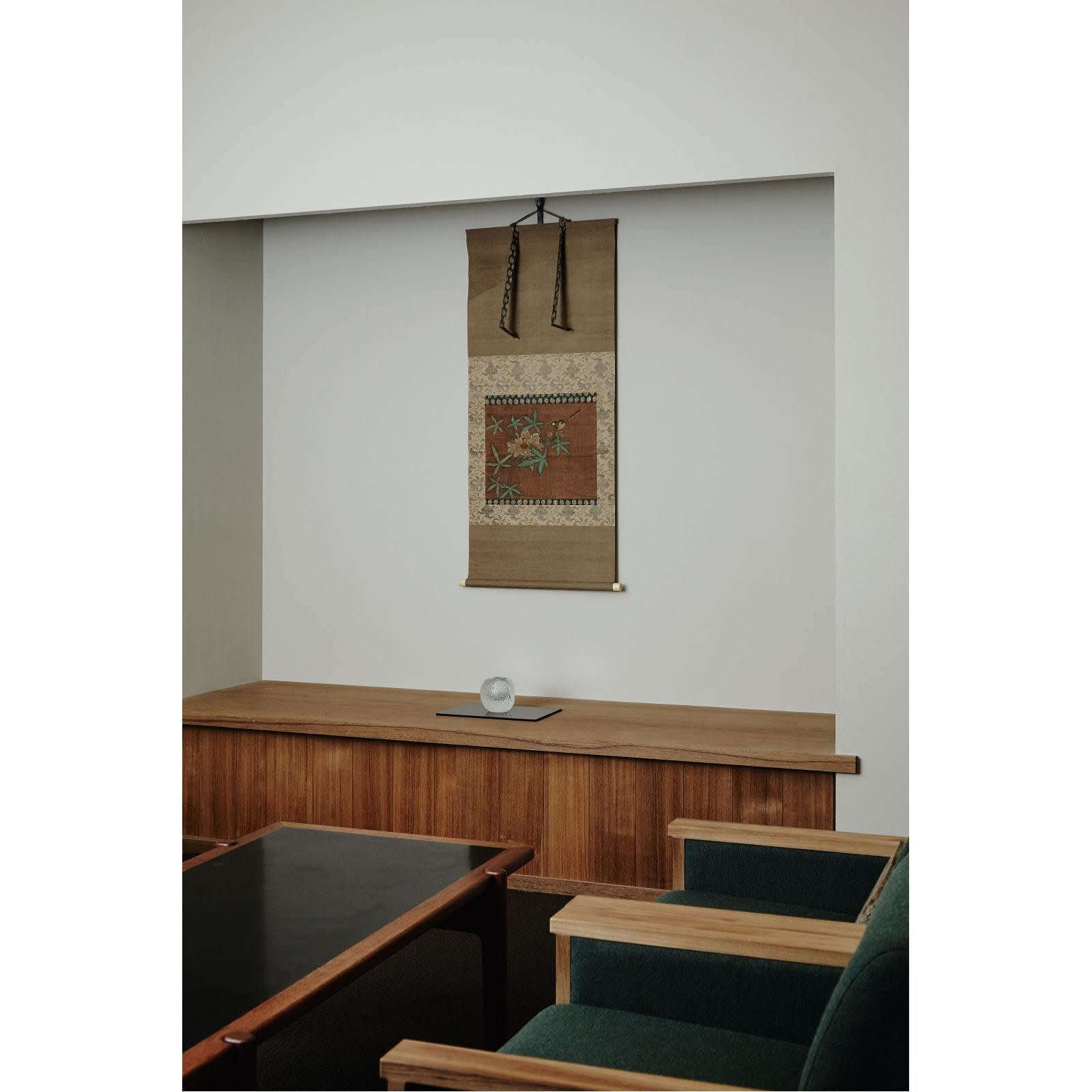Sesson Shūkei (16th century)
Wagtail
Color on silk, hanging scroll
With box authentication by Kawase Kazuma (1950), double boxed
Seal: Sesson
30.8 x 39.4 cm
119 x 52 cm (overall)
With box authentication by Kawase Kazuma (1950), double boxed
Seal: Sesson
30.8 x 39.4 cm
119 x 52 cm (overall)
Further images
Stamped in the lower right corner, the seal on Wagtail, which is now mounted as a hanging scroll, indicates that Sesson may have painted this work at a relatively young age. Four other works, also combining ora and fauna, by the artist have the same seal and nearly identical measurements. Of the four, one piece is stored in a box with an inscription that indicates that the work once belonged to a set of eight paintings, which were affixed to a folding screen that was formerly owned by the Kawasaki family in Kobe. Wagtail comes in a box with an inscription, dated 1950, indicating that the hanging scroll was originally part of a six-panel screen with Sesson paintings styled after Lu Ji, and owned by the Konoe clan. These inscriptions suggest that the current work may have belonged in the Konoe household before it went to the Kawasaki family. The name, “Lu Ji” 呂記 , inscribed on the box is thought to be the Chinese Ming-dynasty artist Lu Ji 呂紀 (1429-1505), though scholars indicate that the style reflects the influence of the Song-dynasty Imperial Academy. Nonetheless, the painting fully demonstrates Sesson’s style and lacks the tranquil quality of the Song Imperial Academy.
Sesson also left us with two ink paintings of wagtails with long beaks, though neither birds resemble the wagtail here. This may perhaps be due to differences in which the wagtails were rendered in color versus ink. Their plump, round bodies like those of Sesson’s sparrows, however, are similar.
The large blossom in full bloom appears to be a type of peony, though such peonies with palmatisect leaves cannot be found in other paintings of birds and flowers by Sesson. For example, the peony in Birds and Flowers by Sesson in the collection of the University Art Museum, Tokyo University of the Arts, has unusually long leaf stems, which resemble those in this painting. Sesson may have rendered the peony branch with an exaggerated bend to account for the weight of the wagtail rest- ing on one of its buds. This odd imbalance is distinctive of works by the artist, who is perhaps highly recognized for this reason. Although this relatively early work is not one of his many masterful ink paintings, it fully exhibits his unique style.
Sesson Shukei (painter; 16th century)
Also known as Jokei; Kakusenrojin.
Hitachi-born Zen priest and painter in the late Muromachi and Azuchi-momoyama periods (16th century). Became a Zen priest despite being a descendant of the Satake clan. Developed his distinctive artistic style while admiring the manner of Shubun and Sesshu. A master of sansui (landscape) painting; also well-known for his paintings of kacho (flower-and-bird), and human figures.
Sesson also left us with two ink paintings of wagtails with long beaks, though neither birds resemble the wagtail here. This may perhaps be due to differences in which the wagtails were rendered in color versus ink. Their plump, round bodies like those of Sesson’s sparrows, however, are similar.
The large blossom in full bloom appears to be a type of peony, though such peonies with palmatisect leaves cannot be found in other paintings of birds and flowers by Sesson. For example, the peony in Birds and Flowers by Sesson in the collection of the University Art Museum, Tokyo University of the Arts, has unusually long leaf stems, which resemble those in this painting. Sesson may have rendered the peony branch with an exaggerated bend to account for the weight of the wagtail rest- ing on one of its buds. This odd imbalance is distinctive of works by the artist, who is perhaps highly recognized for this reason. Although this relatively early work is not one of his many masterful ink paintings, it fully exhibits his unique style.
Sesson Shukei (painter; 16th century)
Also known as Jokei; Kakusenrojin.
Hitachi-born Zen priest and painter in the late Muromachi and Azuchi-momoyama periods (16th century). Became a Zen priest despite being a descendant of the Satake clan. Developed his distinctive artistic style while admiring the manner of Shubun and Sesshu. A master of sansui (landscape) painting; also well-known for his paintings of kacho (flower-and-bird), and human figures.









